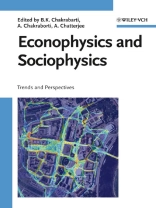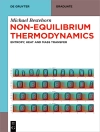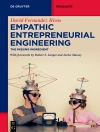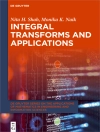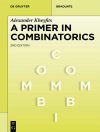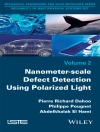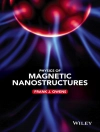Using tricks to handle coupled nonlinear dynamical many-body systems, several advancements have already been made in understanding the behavior of markets/economic/social systems and their dynamics. The book intends to provide the reader with updated reviews on such major developments in both econophysics and sociophysics, by leading experts in the respective fields. This is the first book providing a panoramic view of these developments in the last decade.
Jadual kandungan
Preface.
List of Contributors.
1 A Thermodynamic Formulation of Economics (Juergen Mimkes).
1.1 Introduction.
1.2 Differential Forms.
1.3 The First Law of Economics.
1.4 The Second Law of Economics.
1.5 Statistics.
1.6 Entropy in Economics.
1.7 Mechanism of Production and Trade.
1.8 Dynamics of Production: Economic Growth.
1.9 Conclusion.
References.
2 Zero-intelligence Models of Limit-order Markets (Robin Stinchcombe).
2.1 Introduction.
2.2 Possible Zero-intelligence Models.
2.3 Data Analysis and Empirical Facts Regarding Statics.
2.4 Dynamics: Processes, Rates, and Relationships.
2.5 Resulting Model.
2.6 Results from the Model.
2.7 Analytic Studies: Introduction and Mean-field Approach.
2.8 Random-walk Analyses.
2.9 Independent Interval Approximation.
2.10 Concluding Discussion.
References.
3 Understanding and Managing the Future Evolution of a Competitive Multi-agent Population (David M.D. Smith and Neil F. Johnson).
3.1 Introduction.
3.2 A Game of Two Dice.
3.3 Formal Description of the System’s Evolution.
3.4 Binary Agent Resource System.
3.5 Natural Evolution: No System Management.
3.6 Evolution Management via Perturbations to Population’s Composition.
3.7 Reducing the Future–Cast Formalism.
3.8 Concluding Remarks and Discussion.
References.
4 Growth of Firms and Networks (Yoshi Fujiwara, Hideaki Aoyama, and Wataru Souma).
4.1 Introduction.
4.2 Growth of Firms.1
4.3 Pareto–Zipf and Gibrat under Detailed Balance.
4.4 Small and Mid-sized Firms.
4.5 Network of Firms.
4.6 Conclusion.
References.
5 A Review of Empirical Studies and Models of Income Distributions in Society (Peter Richmond, Stefan Hutzler, Ricardo Coelho, and Przemek Repetowicz).
5.1 Introduction.
5.2 Pareto and Early Models of Wealth Distribution.
5.3 Current Studies.
5.4 A Case Study of UK Income Data.
5.5 Conclusions.
References.
6 Models of Wealth Distributions – A Perspective (Abhijit Kar Gupta).
6.1 Introduction.
6.2 Pure Gambling.
6.3 Uniform Saving Propensity.
6.4 Distributed Saving Propensity.
6.5 Understanding by Means of the Transition Matrix.
6.6 Role of Selective Interaction.
6.7 Measure of Inequality.
6.8 Distribution by Maximizing Inequality.
6.9 Confusions and Conclusions.
References.
7 The Contribution of Money-transfer Models to Economics (Yougui Wang, Ning Xi, and Ning Ding).
7.1 Introduction.
7.2 Understanding Monetary Circulation.
7.3 Inspecting Money Creation and its Impacts.
7.4 Refining Economic Mobility.
7.5 Summary.
References.
8 Fluctuations in Foreign Exchange markets (Yukihiro Aiba and Naomichi Hatano).
8.1 Introduction.
8.2 Modeling Financial Fluctuations with Concepts of Statistical Physics.
8.3 Triangular Arbitrage as an Interaction among Foreign Exchange Rates.
8.4 A Macroscopic Model of a Triangular Arbitrage Transaction.
8.5 A Microscopic Model of Triangular Arbitrage Transaction.
8.6 Summary.
References.
9 Econophysics of Stock and Foreign Currency Exchange Markets (Marcel Ausloos).
9.1 A Few Robust Techniques 251
9.2 Statistical, Phenomenological and “Microscopic” Models.
9.3 The Lux–Marchesi Model.
References.
10 A Thermodynamic Formulation of Social Science (Juergen Mimkes).
10.1 Introduction.
10.2 Probability.
10.3 Elements of Societies.
10.4 Homogenious Societies.
10.5 Heterogeneous Societies.
10.6 Dynamics of Societies.
10.7 Conclusion.
References.
11 Computer Simulation of Language Competition by Physicists (Christian Schulze and Dietrich Stauffer).
11.1 Introduction.
11.2 Differential Equations.
11.3 Microscopic Models.
11.4 Conclusion.
11.5 Appendix.
References.
12 Social Opinion Dynamics (Gérard Weisbuch).
12.1 Introduction.
12.2 Binary Opinions.
12.3 Continuous Opinion Dynamics.
12.4 Diffusion of Culture.
12.5 Conclusions.
References.
13 Opinion Dynamics, Minority Spreading and Heterogeneous Beliefs (Serge Galam).
13.1 The Interplay of Rational Choices and Beliefs.
13.2 Rumors and Collective Opinions in a Perfect World.
13.3 Arguing by Groups of Size Three.
13.4 Arguing by Groups of Size Four.
13.5 Contradictory Public Opinions in Similar Areas.
13.6 Segregation, Democratic Extremism and Coexistence.
13.7 Arguing in Groups of Various Sizes.
13.8 The Model is Capable of Predictions.
13.9 Sociophysics is a Promising Field.
References.
14 Global Terrorism versus Social Permeability to Underground Activities (Serge Galam).
14.1 Terrorism and Social Permeability.
14.2 A Short Introduction to Percolation.
14.3 Modeling a Complex Problem as Physicists do.
14.4 The World Social Grid.
14.5 Passive Supporters and Open Spaces to Terrorists.
14.6 The Geometry of Terrorism is Volatile.
14.7 From the Model to Some Real Facts of Terrorism.
14.8 When Regional Terrorism Turns Global.
14.9 The Situation Seems Hopeless.
14.10 Reversing the Strategy from Military to Political.
14.11 Conclusion and Some Hints for the Future.
References.
15 How a “Hit” is Born: The Emergence of Popularity from the Dynamics of Collective Choice (Sitabhra Sinha and Raj Kumar Pan).
15.1 Introduction.
15.2 Empirical Popularity Distributions.
15.3 Models of Popularity Distribution.
15.4 Conclusions.
References.
16 Crowd Dynamics (Anders Johansson and Dirk Helbing).
16.1 Pedestrian Modeling: A Survey.
16.2 Self-organization.
16.3 Other Collective Crowd Phenomena.
16.4 Bottlenecks.
16.5 Optimization.
16.6 Summary and Selected Applications.
References.
17 Complexities of Social Networks: A Physicist’s Perspective (Parongama Sen).
17.1 Introduction.
17.2 The Beginning: Milgram’s Experiments.
17.3 Topological Properties of Networks.
17.4 Some Prototypes of Small-world Networks.
17.5 Social Networks: Classification and Examples.
17.6 Distinctive Features of Social Networks.
17.7 Community Structure in Social Networks.
17.8 Models of Social Networks.
17.9 Is it Really a Small World? Searching: Post Milgram.
17.10 Endnote.
17.11 Appendix: The Indian Railways Network.
References.
18 Emergence of Memory in Networks of Nonlinear Units: From Neurons to Plant Cells (Jun-ichi Inoue).
18.1 Introduction.
18.2 Neural Networks.
18.3 Summary: Neural Networks.
18.4 Plant Intelligence: Brief Introduction.
18.5 The I–V Characteristics of Cell Membranes.
18.6 A Solvable Plant-intelligence Model and its Replica Analysis.
18.7 Summary and Discussion.
References.
19 Self-organization Principles in Supply Networks and Production Systems (Dirk Helbing, Thomas Seidel, Stefan Lämmer, and Karsten Peters).
19.1 Introduction.
19.2 Complex Dynamics and Chaos.
19.3 The Slower-is-faster Effect.
19.4 Adaptive Control.
19.5 Summary and Outlook.
References.
20 Can we Recognize an Innovation?: Perspective from an Evolving Network Model (Sanjay Jain and Sandeep Krishna).
20.1 Introduction.
20.2 A Framework for Modeling Innovation: Graph Theory and Dynamical Systems.
20.3 Definition of the Model System.
20.4 Time Evolution of the System.
20.5 Innovation.
20.6 Six Categories of Innovation.
20.7 Recognizing Innovations: A Structural Classification.
20.8 Some Possible General Lessons.
20.9 Discussion.
20.10 Appendix A: Definitions and Proofs.
20.11 Appendix B: Graph-theoretic Classification of Innovations.
References.
Color Plates.
Subject Index.
Author Index.
Mengenai Pengarang
Bikas K Chakrabarti is a senior professor of theoretical condensed matter physics at the Saha Institute of Nuclear Physics, Kolkata, India. He received his doctorate in physics from Calcutta University in 1979. Following postdoctoral positions at Oxford University and Cologne University, he joined the Saha Institute of Nuclear Physics, Kolkata in 1983. Among others, his key research interests are statistical physics of linear polymers in disordered media and physics of quantum glasses and annealing and, recently, applications of statistical physics to interdisciplinary areas of geoscience (earthquake models) and economics (wealth distribution in societies). He has written and edited several books on these topics. Professor Chakrabarti is a fellow of the Indian Academy of Sciences (Bangalore) and the Indian National Science Academy (New Delhi).
Anirban Chakraborti is a lecturer in theoretical physics at Banaras Hindu University (BHU), Banaras, India. He received his doctorate in physics from Jadavpur University in 2003. Following postdoctoral positions at Helsinki University of Technology, Brookhaven National Laboratory and Saha Institute of Nuclear Physics, he moved back to India to work at BHU. Statistical physics of the traveling salesman problem, models of trading markets, stock market correlations and portfolio optimization, adaptive minority games and bioinformatics have been his major research interests.
Arnab Chatterjee is a graduate student of theoretical condensed matter physics at the Saha Institute of Nuclear Physics, Kolkata, India. He has worked on dynamic transitions in Ising models, while also taking an interest in the application of statistical physics to varied interdisciplinary fields such as complex networks and econophysics. He has studied structural properties of the transport networks and is now into developing the ideal-gas models of markets.
